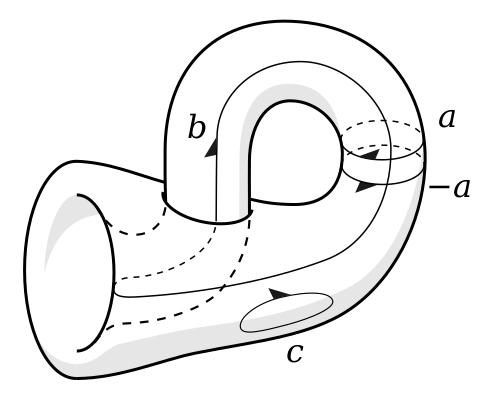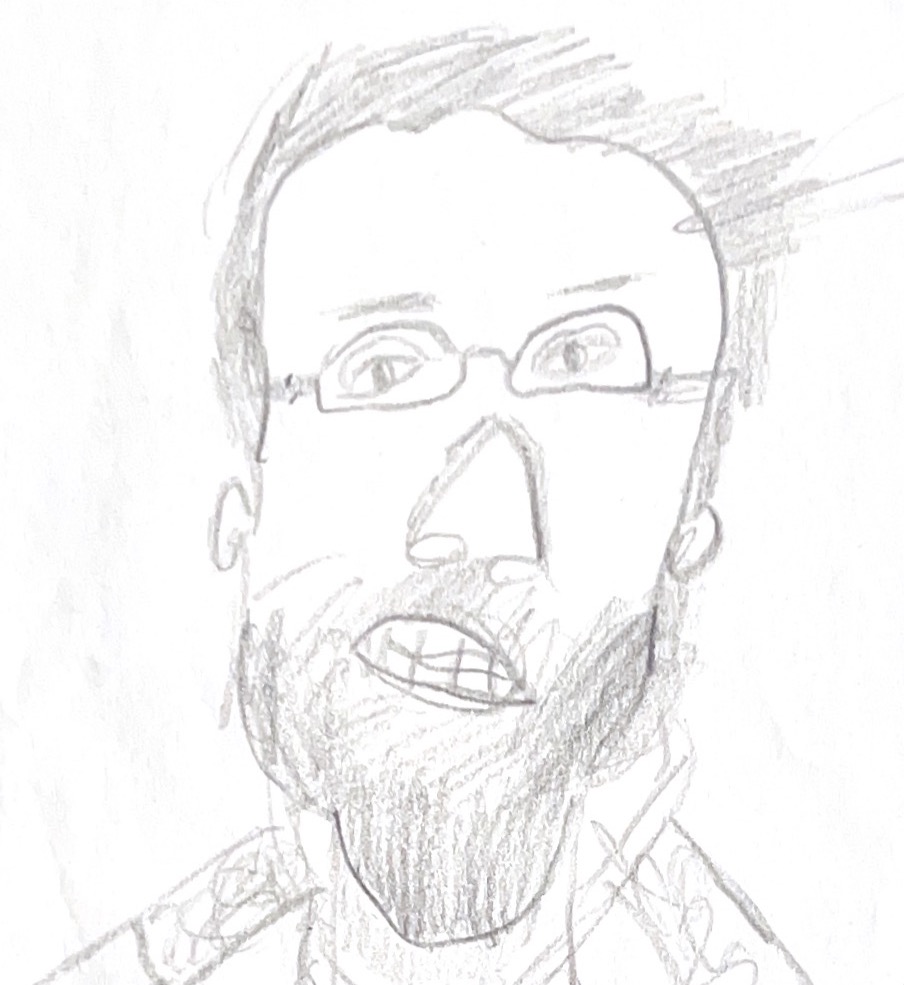ma516: (Algebraic) Topology - f24



 (CC BY-SA 4.0) : link
(CC BY-SA 4.0) : link
Class Meetings
- Fall 2024 (Aug26 → Dec13)
- MW 11:00-12:40PM
- JXJ 2319
- zoom link - passcode 700775
Instructor

Daniel Rowe
darowe{at}nmu{dot}edu
I'm an associate professor of mathematics in the Mathematics and Computer Science Department at Northern Michgan University. I've been a professor at NMU for nine years, and I am very passionate about the praxis of doing mathematics and teaching it. I grew up on a fishing camp in Northwestern Ontario, Canada.
Need Math Help?
- Office Hours
- W 1-2, R 10-11, F 11-12
- JXJ 2228
- zoom link - passcode 809390
- read the relevant section(s) of our materials
- study all posted solutions
- re-watch the recorded lectures
Class Structure
- hybrid-flexible, in-person and over zoom
- strive for in-person attendance if possible!
- avoid becoming reliant on zoom and recordings!
- engagement is vital to learning mathematics (or anything)
- (30%) Homework
- (25%) Midterm Exam
- (10%) Research Project
- (10%) Presentation
- (25%) Final Exam
Grade Scale
A (92-100%)
A- (90-91%)
B+ (86-89%)
B (82-85%)
B- (80-81%)
C+ (76-79%)
C (72-75%)
C- (70-71%)
D+ (66-69%)
D (62-65%)
D- (60-61%)
F (≤ 59%)
Learning Outcomes
This is an advanced course in topology. Topology is a fundamental mathematical subject that possesses connections with many different areas of mathematics. The instructor will cover the following topics: topological spaces, continuous functions, compactness, connectedness, the fundamental group, and homology. Additionally, the instructor may focus on topics such as: the classification of surfaces, cohomology, the Lefschetz fixed-point theorem, the Borsuk-Ulam theorem, or topics from knot theory. After completion of this course, a graduate student will have sufficient experience with, and knowledge of topology, and be capable of performing calculations and proving theorems within the discipline. For example, they will have the skill to determine if a topological space is compact or connected, describe the continuous functions on a particular topological space, compute the fundamental group, and homology groups of particular spaces, and prove the classification of two dimensional surfaces.
Academic Honesty
In the spirit of academic honesty, credit for this section is due to Asher Auel, as this is an adapted form of their discussion of academic honesty in mathematics.
- Working with others on mathematics, and using electronic resources is both highly encouraged and fun. You may work with anyone (e.g. classmates, non-classmates, tutors, etc.) If this is done well, you'll learn more effectively and efficiently.
Here's the fundamental rule:
Work with anyone or anything to develop your own personal understanding of the ideas required to solve your homework problem, but always write-up the final draft by yourself and in your own words.
- Writing up the final draft is just as important as figuring out the problems on scratch paper with your friends, using the internet, ChatGPT, etc. If you work with people, or use electronic resources on a particular homework:
You must list your collaborators and electronic sources at the top of the very first page. This makes the process completely transparent and honest.
A Note About Copying Mathematics
Mathematical writing is idiosyncratic; if your assignments are copied, it is quite easy to tell. You will not learn by copying solutions from others, or from external sources such as internet forums (e.g. math.stackexchange) and generative AI (e.g. ChatGPT). Regarding internet forums, you are free to look at them and use any understanding you've gained from them. Be warned that internet forums often contain incorrect or circuitous solutions, misleading discussions, use of techniques outside of the course material, and other material that may be detrimental to your learning process. Even the time that it takes to repeatedly search for solutions and read through dozens of forum posts could be better spent learning the material on your own or composing a question to the instructor or classmate. Regarding generative AI (e.g. ChatGPT), you are free to experiment with asking questions, but be warned that these systems are currently still very bad at deductive reasoning, and that the output may contain a mix of correct, incorrect, and unverified statements. Ask them to prove something false, they will work hard to do so, often giving contradictory answers. Therefore, I would be very careful with using these tools as learning resources on your own.
Punishments
In this modern world of online resources, cheating, copying, copy-and-pasting, ChatGPT, etc.; it is now more important than ever that citizens develop the intelligence to use their own brain to solve problems. I want my classes to be a postive force in this regard, by promoting the principles of academic honesty, and punishing those who disrespect those principles. The first infraction will result in a 0% on the entire assigment and a stern warning. If there is a second infraction, I will pursue sanctions through the Dean of Students office.
Accessibility
If you have a need for disability-related accommodations or services, please inform the Coordinators of Disability Services in the Dean of Students Office at 2001 C. B. Hedgcock Building (227-1737 or disability@nmu.edu). Reasonable and effective accommodations and services will be provided to students if requests are made in a timely manner, with appropriate documentation, in accordance with federal, state, and University guidelines.
Reading Materials
Homework + Quizzes + Exams
- hw1 (due 9/8 @ 11:59PM) → sol (9/12 @ 11:00am)
- hw2 (due 9/24 @ 11:59PM) → sol (10/1 @ 2:30pm)
- hw3 (due 10/9 @ 11:59PM) → sol (10/14 @ 9:30pm)
- hw4 (due 10/20 @ 11:59PM) → sol (10/22 @ 1:30pm)
- hw5 (due 11/13 @ 11:59PM) → sol (11/19 @ 2:00pm)
- hw6 (due 12/8 @ 11:59PM)
- practice_midterm → sol
- midterm_exam (due 10/24 @ 11:59PM) → sol
- practice_final
- final_exam
project ideas (3 page paper + 15 minute presentation)
- homology of real Grassmannians G(k,n) - Sam
- the Lefschetz fixed-point theorem
- Matt
- introduction to the braid group on n-strands - Hunter
- introduction to rational tangles - Travis
- introduction to knot theory -
- George
- the Borsuk-Ulam theorem (check out this video) - Meghan
- why do the ℂ-solutions of an elliptic curve form a torus? - Trent
- topologies of finite sets
- Garek
- topological representations of spacetime - Kayla
- Gradient/Green/Divergence/Stokes Theorems - the FTC in various forms - Shelby
- zeros of vector fields and the hairy ball theorem
- the classification of compact orientable surfaces
- homology of real projective spaces Pn( ℝ )
- the Jones polynomial
Submitting Your Work
- please put a .pdf file inside our shared google folder
- the shared google folder will be titled f24_ma516_yourlastname
- I will share it with you within first two weeks of class
- please don't submit anything via email attachment
- name your files in an organized manner, for example: hw1_Jane_Smith.pdf
- always show your work and keep it organized
- indicate/circle/highlight your answers
- answer the questions in the correct order
Late Submissions
- for midterm and final: must be submitted on time
- all other submissions: no late penalty until
the solutions are posted, then -50%
Checking Your Grade
- you can check your grade anytime, look for
untitled spreadsheet in our shared folder,
it will appear after the first few assignments
have been graded
Schedule + Recordings
> colored text = clickable links
> late homework may be submitted anytime during the semester
> before the solutions are posted (-0%), otherwise (-50%)
wk1: aug26 → aug30
□ study this webpage and all class information
□ study the lectures
□ start working on hw1
wk2: sept2 → sept6
□ study the lectures
□ keep working on hw1
wk3: sept9 → sept13
□ study the lectures
□ start working on hw2
wk4: sept16 → sept20
□ study the lectures
□ keep working on hw2
wk5: sept23 → sept27
□ study the lectures
□ start working on hw3
wk6: sept30 → oct4
□ study the lectures
□ keep working on hw3
wk7: oct7 → oct11
□ study the lectures
□ start working on hw4
wk8: oct14 → oct18
□ study the lectures
□ keep working on hw4
□ study for midterm exam next wed
- 10/14
- homeomorphism vs.
- homotopy equivalence
- the subspace topology
- inclusions, restrictions
- retractions, extensions
- 10/16
- help with hw4
- practice midterm
wk9: oct21 → oct25
□ study the lectures
□ midterm exam on wednesday
□ start working on hw5
- 10/23
- midterm exam (9:00AM - 10/24 @ 11:59PM)
wk10: oct28 → nov1
□ study the lectures
□ keep working on hw5
wk11: nov4 → nov8
□ study the lectures
□ finish up hw5
wk12: nov11 → nov15
□ study the lectures
□ start working on hw6
- 11/11
- p.309-313
- Grassmannians over R
wk13: nov18 → nov22
□ study the lectures
□ keep working on hw6
- 11/18
- Mobius cross constructions
- center cuts
- 1/3,2/3 cuts
wk14: dec2 → dec6
□ study the lectures
□ finish up hw6
- 12/2
- Trent Holmgren
- Garek Dyszel
- Sam Mulholland
- 12/4
- George Mensah
- Kayla Bittenbinder
- Shelby Juidici
wk15: dec9 → dec13 (FINAL EXAM WEEK)
□ final exam date: Tue 12/10 @ 10:00-11:50AM
□ take-home exam Tue 12/10 + Wed 12/11
□ due in folder by Wed 12/11 @ 11:59PM
□ complete any late homework for 50%




 (CC BY-SA 4.0) : link
(CC BY-SA 4.0) : link